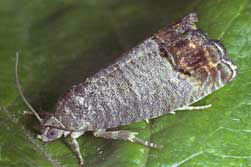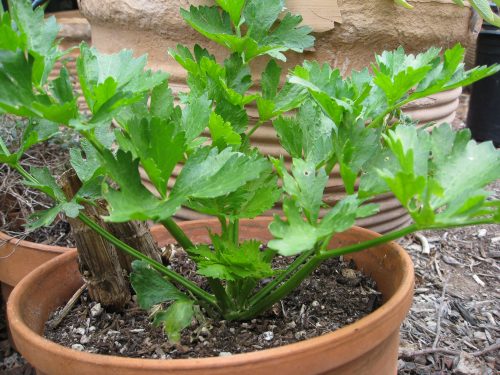A new question came in to Ask Gardenerd this week:
“Hi, My mom has a very good fuji apple tree, but we lose a lot of apples
to worms. Is there a natural, organic, non-Monsanto something that
would help deter pests? Thank you, -Michael”
I’m so glad that you are seeking an alternative method to prevent this problem! It’s so easy to grab a bottle off the shelf and start spraying. Let’s see what we can do to get you on the road to apple tree salvation.

It sounds like your problem pest is the codling moth (Cydia (Laspeyresia) pomonella). The codling moth is gray with wings that are tented overhead. They blend in with most tree bark, so they are difficult to find. According to the University of California Integrated Pest Management Program website, the life cycle of a codling moth goes something like this:
Image courtesy of Living with Bugs.com
“Codling moth overwinters as full-grown larvae within thick, silken cocoons
under loose scales of bark and in soil or debris around the base of the
tree. The larvae pupate inside their cocoons in early spring and emerge
as adult moths mid-March to early April. The moths are active only a
few hours before and after sunset, and they mate when sunset
temperatures exceed 62°F.After mating each female deposits 30 to 70 tiny, disc-shaped eggs
singly on fruit, nuts, leaves, or spurs. After the eggs hatch, young
larvae seek out and bore into fruit or developing nuts. After completing
development they leave the fruit and drop from the trees to search out
pupation sites and continue the life cycle in the soil or on debris
under the tree; some crawl back up the tree to pupate in bark crevices.The rate of development will vary with temperature, proceeding
more rapidly in warmer weather and climates. Depending on the climate,
codling moth can have two, three, and sometimes four generations per year.”
So as you might guess, treatment for codling moths is mostly an exercise in prevention, and it might be a good idea to get your neighbors involved as well, since their trees are most likely infested as well. Here are a few steps to take (again, from the UC IPM website):
Inspections – clearing away infected fruit starts 6 to 8 weeks after bloom. Mark your calendar and check the fruit for any that have signs of frass, which is basically insect poop. Removing the infected fruit is the first step in cutting down the population before they have a chance to crawl out of the fruit. Do this every 2 weeks. Don’t worry about losing fruit – the common practice of fruit thinning actually encourages a better tasting finished product.
Bagging – putting bags around each piece of fruit while it’s on the tree is the next step in insecticide-free pest control. Here’s what that looks like:
Bagging is usually done 4 to 6 weeks after bloom when the fruit is 1/2 to 1 inch in diameter. It is time consuming to bag each piece of fruit, but worth it if you only have one tree.
Trapping – this is a relatively effective way of catching the moths before they can do damage. Gardens Alive offers a few different options for capturing moths with pheromones. Trapping can be somewhat hit or miss, depending on your timing, so it’s best to combine it with regular inspections and other preventative methods.
Beneficial Insects – You can release a beneficial wasp (not the big kind, these are gnat sized) Trichogramma platneri which lay their eggs inside the codling moth egg. This method is not completely effective and is also recommended to combine with other prevention methods. Rincon-Vitova, a reliable producer of beneficial insects, offers them in bulk here.
Spinosad – is the commercially available organic pesticide that is used widely to control a plethora of pest issues in organic agriculture. It is made from a naturally occurring bacterium called Saccharopolyspora spinosa. You’ll find this in nurseries in the form of Monterey Garden Insect Spray, or Green Light Spinosad Garden Spray.
There is still more to learn about codling moths, but I’ll let you investigate further if needed. I hope this helps you with your mom’s Fuji apple tree. Thanks for writing in, and keep those questions coming.


